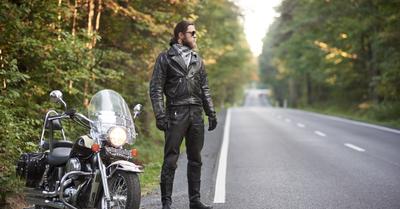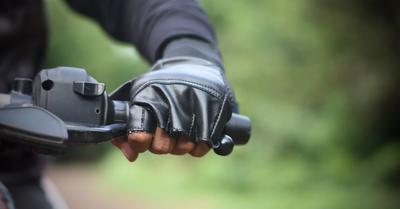Why is the Honda VTR 1000 Superhawk so durable?
The Honda VTR 1000 Superhawk is a sport bike that normally would mean it’s a low-mileage bike with a powerful but quickly-aged engine. It’s a liter bike powered by a liquid-cooled, four-stroke, 90-degree V-twin engine with a displacement of 996cc and a bore and stroke of 98mm x 66mm. It features dual overhead cams (DOHC) and four valves per cylinder, operated by shim-under-bucket valve lash adjustment.
The engine compression ratio is 9.4:1 and produces approximately 108 horsepower at 9,000 rpm and 71 lb-ft of torque at 7,500 rpm. The VTR 1000 Superhawk uses a six-speed transmission and chain drive to transfer power to the rear wheel. It’s equipped with a pair of 48mm carburetors, the largest in production at the time.
The Liquid-cooled Engine Extends the Life of the Engine
The VTR 1000 Superhawk's liquid-cooled engine is better able to regulate operating conditions and temperatures. The engine is cooled by a liquid coolant that is circulated through a series of passages in the engine block and cylinder head absorbing heat and maintaining consistent temperatures. This helps to prevent overheating, which can do the most damage to internal engine parts reducing the risk of thermal expansion and contraction of the engine components which causes premature failure.
The liquid coolant also provides better lubrication to the engine components including the water pump and the cylinder walls and piston rings reducing friction and wear.
Connecting Rods with Cap Screws
The VTR 1000's connecting rods are made from high-strength materials and are secured with cap screws rather than nuts. Cap screws provide a more secure and consistent clamping force, which reduces the risk of the connecting rods loosening over time. This improves the engine's reliability and durability reducing the risk of engine damage from a connecting rod failure.
Side Radiators
The VTR 1000's side-mounted radiators provide efficient cooling for the high-performance sport engine which generates a lot of heat. The side-mounted design also allows for better aerodynamics and improved airflow to the engine further promoting engine cooling.
Large Intake Valves
The VTR 1000's large intake valves allow for greater airflow into the engine improving performance and reducing engine stress. The valves are made from high-strength materials and are designed to withstand high temperatures and pressures. The valve train components are also designed with precise tolerances reducing wear and tear and further extending the life of this great bike.
Single-casting Motor Case
The VTR 1000's motor case is made from a single casting. This single-piece construction reduces the risk of oil leaks and other issues that can occur with multi-piece designs. It provides greater rigidity and improved heat dissipation.
48mm Carbs
The Honda VTR 1000's 48mm carburetors are designed to provide precise fuel/air mixture to the engine improving performance and reducing emissions, but only when maintaining the carburetor properly. Honda recommends regular cleaning and adjustment such as cleaning the fuel bowl, jets, and needles and adjusting the idle and mixture settings. Fortunately, Honda designed the carburetors to be easily adjustable for fine-tuning to specific conditions.
The larger carburetors allow for greater airflow into the machine increasing power output and reducing stress on engine parts. This reduces engine strain and wear since the engine doesn't have to work as hard to produce the desired output.
Although it’s not fuel injected, the size of the carbs is designed to minimize clogs and ratio discrepancies. The larger carburetor has a wider opening and a larger fuel bowl, which reduces the likelihood of clogs caused by debris or sediment. Also, this carb setup includes a vacuum-operated fuel valve that ensures a consistent fuel-to-air ratio helping to prevent issues such as running too rich or lean.
The Honda Multi-Action System (HMAS)
The Honda VTR 1000’s suspension system was designed by Honda to be a first-of-its-kind adjustable suspension system that allows riders to adjust the suspension for themselves specific to their desired setting depending on their riding style and conditions.
The HMAS system uses a twin-spar aluminum frame with a fully adjustable suspension system with a telescopic front fork and a single shock at the rear. The front fork features adjustable preload, compression damping, and rebound damping, while the rear shock has adjustable preload and compression damping. When set up properly, not only does the rider enjoy a smoother ride but the life of the Superhawk is extended by protecting suspension and sensitive components from wear and tear.
Maintaining the VTR 1000 Superhawk for Extended Life
All of the above unique specifications for the Superhawk to increase longevity mean nothing without proper and reasonable maintenance. A track bike is considered old at 25,000 miles because of its aggressive riding style, but surprisingly, the following practices will allow this bullet-proof bike to go three times this distance. The Superhawk that is ridden into the ground and the one that is well-cared for are two very different bikes.
Note that the only reported weaknesses of the VTR 1000 are a front cylinder that runs cooler than the rear cylinder, the front head cylinder drain hole can become blocked up easily, and the wiring harness can prematurely wear out. Other than that, you won’t find a better bike for durability.
Break-in of the Honda VTR 1000
The Honda VTR 1000Fs break-in duration is 500 miles which means the rider should keep the throttle below three-quarters, avoiding excessive speeds, gunning the engine, lugging in high gears, and high-revving in low gears.
Scheduled Maintenance of the VTR 1000
Every 600 miles (1,000 km) or 1 month:
- Check the engine oil level and replace the oil and oil filter, cleaning the air filter.
- Check the coolant level and top up if necessary.
- Inspect the brake pads and brake discs for wear and damage.
- Check the brake fluid level and condition.
- Check the tire pressure and tread depth.
- Lubricate the throttle, clutch, and brake cables.
- Check the spark plugs and replace if necessary.
Every 4,000 miles (6,400 km):
- Replace the air filter.
- Adjust the valve clearances.
- Check and adjust the cam chain tensioner.
- Replace the brake fluid.
Every 8,000 miles (12,800 km):
- Replace the spark plugs.
- Replace the coolant.
Every 16,000 miles (25,600 km):
- Replace the drive chain and sprockets.
- Replace the brake pads and front brake discs.
- Replace the brake hoses.
- Replace the fuel filter.
- Check and replace the fuel lines and vacuum hoses if necessary.
- Inspect and replace the steering stem bearings if necessary.
Every 24,000 miles (38,400 km):
- Replace the camshaft chain.
- Replace the fork oil.
- Inspect and replace the wheel bearings if necessary.
- Check and replace the swingarm pivot bearings if necessary.
- Replace the clutch friction plates and clutch springs.
Every 12,000 miles (19,200 km):
- Replace the coolant hoses and clamps.
- Inspect and replace the exhaust system gaskets and muffler packing or upgrade to aftermarket exhausts.
Every 20,000 miles (32,000 km):
- Replace the throttle and clutch cables.
- Replace the front and rear wheel bearings.
- Check and replace the rear shock absorber if necessary.
Every 30,000 miles (48,000 km):
- Replace the fuel hoses.
- Replace the radiator cap.
- Replace the thermostat.
- Check the engine compression and perform a leak-down test to assess the internal condition of the engine.
- Inspect the clutch plates, springs, and basket for wear and damage.
- Inspect the wheel rims for cracks and dents.
- Check and replace the steering head bearings if necessary.
At 40,000 miles (64,000 km):
- Replace the fuel lines and vacuum hoses.
- Check and replace the brake calipers if necessary.
- Inspect and replace the clutch slave cylinder if necessary.
At 50,000 miles (80,000 km):
- Replace the fork seals and oil.
- Replace the wheel bearings.
- Inspect and replace the swingarm bushings if necessary.
At 60,000 miles (96,000 km):
- Replace the throttle body boots.
- Inspect and replace the starter motor if necessary.
- Replace the rear shock absorber.
At 70,000 miles (112,000 km):
- Inspect and replace the alternator and regulator/rectifier if necessary.
- Replace the ignition coils and spark plug wires.
At 75,000 miles (120,000 km):
- Inspect and replace the clutch master cylinder if necessary.
- Replace cam chain tensioners and guides
- Major engine overhaul if necessary














